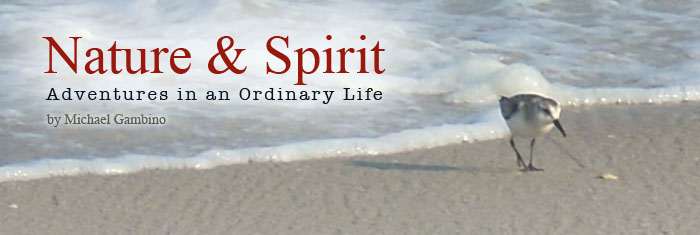Four Minutes to Oblivion
 Wednesday, May 12, 2010 at 05:15PM
Wednesday, May 12, 2010 at 05:15PM Each morning, as I sit at the kitchen table savoring my Jasmine green tea, I gaze out the window at the day. The window faces the center of a courtyard shared by several other condo units. From this vantage point, I casually survey the weather, the quality of the morning light, the trees and landscaped plantings. I watch the antics of chipmunks, crows, squirrels, robins, finches, and a dozen other species of birds and mammals (including humans) as they go about their business of living.
The centerpiece of this window on the world – a lovely 30-foot tall Gray Birch tree – grew leaning a bit towards the east, branches swaying gently and appealingly in the fresh morning breeze.
For ten years I have watched this tree respond to snow storms, to wind, to the landscaper's trimmer, and the animal life that flew or climbed amongst its branches and leaves. It showed me the progress of the seasons from dangling catkins and bright green leaves unfurling in spring, to the autumn yellows and graceful surrender of spent leaves falling to earth.
Yesterday, I noticed that after the two days of high winds that raced through our area, it was leaning another degree or so. I remember thinking as I drank my tea that this would alert my neighbor or the landscapers to remedy the situation by attaching a cable to the tree and anchoring it to avoid the further, adverse influence of gravity. It alerted them indeed, but I was in for a shock when the crew arrived with a wood chipper truck and chainsaws.
"Oh no", I thought, "This is the end. They aren't even going to try to save the tree!" Then I watched as the crew went to work, lassoing the tree to guide its fall, cranking up the chipper and chainsaw. I felt a strong sadness, that was replaced by shock and a bit of terror. The tree was down, limbed, sectioned and fed into the chipper in four minutes flat! Four minutes to oblivion.
I felt disturbed that this tree that had given so much to the world – oxygen, shade, beauty, inspiration, homes and food for birds and mammals, habitats for lichens, moss, and insects – went from a healthy, vibrant organism full of life, to a pile of chips in a truck in four minutes. I don't know how to express my experience of this, but the spirit of that tree didn't have a chance to properly relinquish its life in a natural manner. It was not diseased, or particularly large and dangerous. It was simply judged to be not worth saving. It was viewed and treated as an object that was not functioning properly anymore.
In the forest, trees may get broken by storms, but they often sprout once more, or at least rest on the forest floor slowly changing form, no longer growing, but continuing to contribute to the forest community that it grew from. A tree takes a long time to die naturally. A long time before the life-force is gone. I have seen storm damaged trees – shattered, broken, uprooted, with limbs torn off – put forth green leaves in the spring!
I understand, of course, the need to remove some trees and manage vegetation of all kinds within our infrastructure of cities and towns, highways and the like. The tree crew that came to take my Gray Birch did not have a personal relationship with this tree as I did. Therefore, they did not try to save it. It was easier just to cut it down.

Reader Comments (1)
I feel your pain. Really.